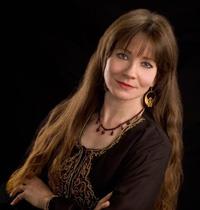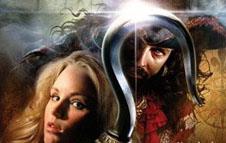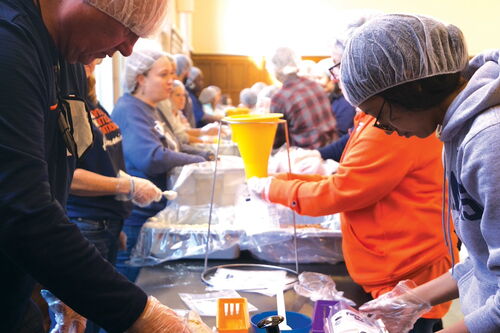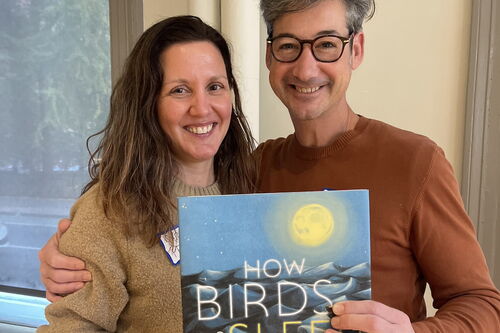The Dark Side of Peter Pan

Andrea Jones had just typed the period at the end of the final sentence of the first draft of her book Hook & Jill—a psychological allegory based on author J.M. Barrie’s Peter Pan myth—when she got a phone call informing her that it was the 100th anniversary of Peter Pan.
“We can’t get rid of him,” says Jones (AB ’78, speech communication), with a laugh. “He’s the boy who never grows old.”
Peter Pan seems to live perpetually on the shelves of bookstores and video stores. Jones, who returned to her alma mater recently to give a talk, can rattle off a long list of works related to the myth to come out in the last 10 years alone, such as the books Peter Pan’s Neverworld, Everland and Other Stories, The Child Thief, and Neverland: J.M. Barrie, the DuMauriers and the Dark Side of “Peter Pan;” and recent movies such as Finding Neverland and director P.J. Hogan’s Peter Pan.
“I think there’s something that just grabs the imagination with Peter Pan,” Jones says. “For children that means you don’t have to go to school. You don’t have to worry about getting a job and supporting yourself and your family. But there’s also a poignancy there for grown-ups, wanting to avoid the painful parts of being an adult.”
Jones herself was inspired to write a new take on the fairy tale after watching Hogan’s Peter Pan. Before she saw the film, Jones did not understand why the world needed another Peter Pan movie. To her surprise, Hogan’s version, which came out in 2003, offered a fresh look at the story by tackling more mature subjects than other adaptations.
However, Jones says that because the film was for kids, the filmmakers “took it to the point of adult themes and then retreated.” Her fascination with the darker themes presented in the movie, however, inspired her to take the myth all the way into the adult world.
Jones did not have to stray far from Barrie’s original book, Peter and Wendy, to emphasize the darker side of the story. Within Barrie’s narrative she saw Jungian psychology, an analytical school of thought named after psychologist Carl Jung, based on the belief that the human psyche can be understood through things such as religion, art, dreams, philosophy, and mythology—Peter Pan being the perfect example, Jones says.
In an early scene from Barrie’s book, for example, Peter loses his shadow, and the motherly Wendy sews it back on for him. According to Jones, Jungian psychology says that everyone has a “shadow within”—a dark side—and that it is healthy to recognize it yet not allow it to control one’s actions. Peter fails to acknowledge his shadow throughout Peter and Wendy, and, as a result, never grows up.
In Hook & Jill, Jones’s chief storyteller is Wendy, whose dark side is not as prominent as Peter’s in Barrie’s original tale.
“Wendy, of course, has a dark side,” Jones says. “But she projects it outward onto the person of Captain Hook.” In Jones’s novel, Wendy brings Hook to life through her stories and subsequently learns that she is accountable for his actions. It is not until she takes responsibility for Hook that she really grows up.

“I focused the story on Wendy because it is a metaphor for my own life experience,” Jones says. “Growing up—challenging the rules that have been laid down— that’s my own experience.” She found a quote from one of Barrie’s notebooks that forms the basis of Hook & Jill, she says. The quote reads: “Question authority. Question accepted views, values, reputations.”
Jones pivots Wendy’s conflict around the idea inspired by Hogan’s movie that Hook might seem attractive to Wendy. Hook can offer her things, such as romance, that Peter cannot. It was at this point in writing the novel, Jones says, that she began to see the faults in Peter.
Peter fails the other characters in Hook & Jill in more ways than his lack of romantic reciprocity. “When I finished writing the book, I realized that my Peter is an Asperger boy,” says Jones, whose family has been struck with four generations of Asperger syndrome, a form of autism in which an individual is often charismatic and creative but “is lacking reciprocity in social relationships.”
“Peter cannot read what his followers want, nor does he care,” Jones says. “He only knows what he wants—he’s very in touch with his own feelings. That’s the heartbreak of Aspberger syndrome.”
As well as lacking social reciprocity, Jones says that people with Asperger syndrome cope with social situations through rules. Once they learn a rule, there are no exceptions. According to Jones, this is the heart of Peter’s dark side.
“My Peter became much more fanatical about his rules than the Peter in the movie,” she says.
Jones looks back to Barrie for her book’s take on growing up. “I think [Barrie] longed for the simplicity—that sense of irresponsibility—and yet he knew that he had to participate in adulthood,” Jones says. “But he could try to enjoy both worlds, by remembering and writing about it.”
She injects this message into Hook & Jill. “When you grow up, you accept responsibilities. Both Wendy (in Hook & Jill) and Barrie did.”








